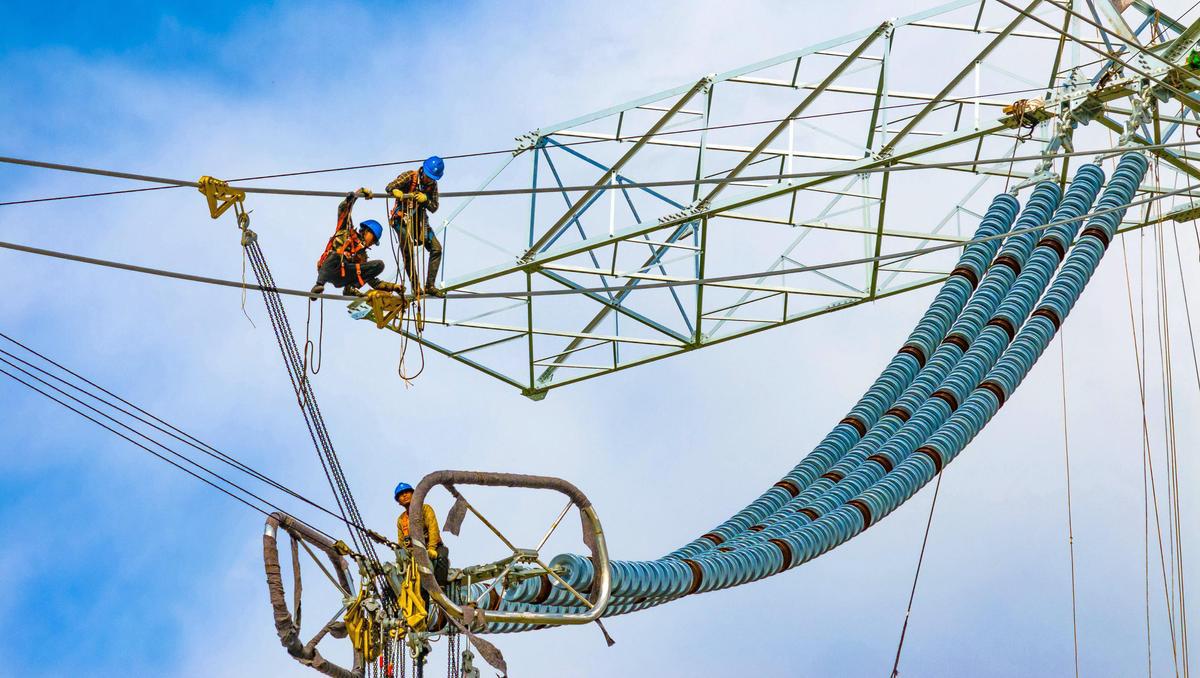Improving technology, equipment upgrades highlighted in NDRC plan

China will extensively upgrade equipment and improve technologies in key energy sectors with a target to increase investments by 25 percent by 2027 compared to 2023 levels, according to a document issued recently by the National Development and Reform Commission and the National Energy Administration.
The plan targets seven areas for transformation, including thermal power, electricity transmission and distribution, wind power and photovoltaics.
These upgrades will optimize the energy industry's structure, facilitate the technological evolution of traditional sectors and foster the growth of emerging energy industries, leading to a shift from "quantity" to "quality" development, said Wang Weiquan, deputy secretary-general of the renewable energy committee of the China Energy Research Society.
READ MORE: Market-based drivers key to energy success
Meanwhile, the recycling of outdated equipment will also improve resource efficiency, reduce waste and support the circular economy.
For thermal power, the focus will be on continuing energy-saving renovations and heating facility modifications. The plan aims to speed up the digital and intelligent upgrade of thermal power plants, emphasizing smart sensing, diagnostics, control and operation.
In transmission and distribution, there will be a push to renovate old substations and power transmission lines, and replace outdated transformers and high-voltage switches to improve grid safety.
State Grid Corp of China has pledged an investment of over 600 billion yuan ($84 billion) in grid upgrades this year, an increase of 71.1 billion yuan from last year. This funding is directed mainly toward ultrahigh voltage direct current projects, enhancing connections between county and main grids, and advancing digital and intelligent grid systems. China Southern Power Grid also said it would invest 195.3 billion yuan from 2024 to 2027, including 40.4 billion yuan this year.
Significant updates are also planned for wind power and photovoltaics. Wind farms older than 15 years or with turbines smaller than 1.5 megawatts each are encouraged to undergo upgrades.
Qin Haiyan, secretary-general of the Chinese Wind Energy Association, said these changes could generate over 3 trillion yuan in output value from 2025 to 2030.
"Upgrading older equipment with advanced technology will enhance the efficiency of wind and solar power generators. Improvements in grid and transmission infrastructure will increase the grid's capacity to integrate power generated from new energy sources and support China's carbon goals," Qin said.
He said China has been developing wind power over the past 10 to 20 years. Many turbines were designed with a life span of 20 years, so those built around 2003 or 2005 have already reached the end of their service life and are due for replacement.
"Although some of these equipment have not yet reached a 20-year life span, their performance is equivalent to turbines from a decade ago, while technological advancements over the past 10 years have drastically improved generation efficiency and turbine technology."
ALSO READ: Report: New energy sector on a roll
Zhou Libo, deputy secretary-general of the electric transportation and energy storage branch of the China Electricity Council, said the sector's shift from scale to quality is timely, as there are over 10 million new energy vehicle charging facilities already in place.
Investment in the construction and upgrade of integrated energy stations, photovoltaic-storage-charging stations and supercharging stations is expected to grow, with additional substantial investments in updating outdated charging stations and adopting new technologies like automatic and vehicle-to-grid interactive charging, Zhou said.
"The construction and upgrade of integrated energy stations, photovoltaic-storage-charging stations and supercharging stations will drive investments. It is estimated that the upgrade of high-power charging equipment alone will attract investments exceeding 100 billion yuan, with additional investments for upgrading outdated charging stations and damaged piles. Investments in new technologies such as automatic charging and vehicle-to-grid interaction also are expected to be substantial," Zhou added.


